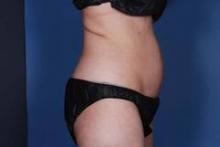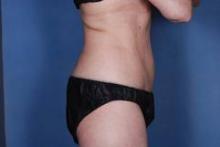DANA POINT, CALIF. – Dr. Mark Jewell shared his clinical experience with Liposonix (Solta Medical), a high-intensity, focused ultrasound device that was cleared by the Food and Drug Administration in 2011 for noninvasive waist circumference reduction, at a meeting sponsored by Skincare Physicians and Northwestern University.
The device is unique, Dr. Jewell said, because the energy it delivers produces fat ablation and contraction and thickening of collagen in the midlamellar matrix – tissue depths of 13-23 mm beneath the skin surface – with minimal collateral damage.
"We’re hitting the collagen-rich layer, which I think is beneficial in terms of body contouring," said Dr. Jewell, associate clinical professor of plastic surgery at Oregon Health and Science University, Portland.
The treated area "gets warm enough to denature collagen, but also to ablate fat. It produces a cosmetic effect both in terms of volume reduction and tightening of collagen in the midlamellar matrix."
Patient selection is important "because we want to be able to deliver the ultrasound where it needs to go," he said. As a rule of thumb, Dr. Jewell does not use the Liposonix in patients with a body mass index of greater than 30 kg/m2 or in those who have more than 3 cm of superficial fat around the waist.
"Too much superficial fat will get bruised, but it will not tighten up," explained Dr. Jewell, who is a past president of the American Society for Aesthetic Plastic Surgery. "For this type of patient you might recommend that they hire a personal trainer for weight loss before you treat them."
Ideal candidates generally have 1.0 cm of fat tissue beyond the focal depth or pass the "pinch an inch" of fat test around their waist. Dr. Jewell uses high-resolution diagnostic ultrasound devices such as the SonoSite in an effort to determine the precise amount of superficial abdominal fat. This strategy "improves accuracy and the quality of our outcomes," he said.
For optimal effect, he strives for a total dosimetry threshold of 150-180 J with the Liposonix. "The device is software driven so it can be focused and patterned in a variety of ways," Dr. Jewell said. While the Liposonix can be operated by a properly trained subordinate in your office, "do the first 20 cases yourself so that you’re familiar with the technology and what’s involved," he advised.
Dr. Jewell disclosed that he is a consultant for Allergan, Medicis, Excaliard-Pfizer, Keller Medical, Solta Medical, and New Beauty Magazine. He is also an investigator for Allergan, Medicis, Excaliard-Pfizer, and Solta Medical.



